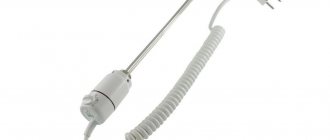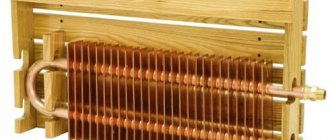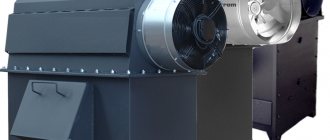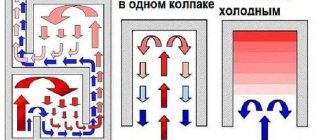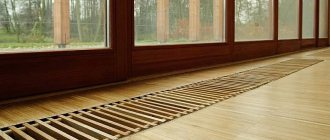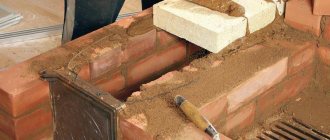The design options for modern interiors are very diverse, and if you have applied skills, then you can easily decorate your home the way you want. Various types of handicrafts are gaining great popularity. These decorative elements are highly valued. They bring personality and comfort to the house. If you have been wondering how to refresh the interior without resorting to repairs, decoupage a heating radiator with your own hands.
To do this, you will need nothing at all: a primer, napkins with a pattern, glue and varnish. And, of course, a little patience and perseverance.
What is the essence of decoupage technique?
Decoupage is a technique of transferring drawings from colored paper to any surface: wood, ceramics, metal, etc. In this way you can decorate anything, from dishes to pieces of furniture. The technology itself is several hundred years old. The fashion for such decoration arose in the Middle Ages in France and does not fade to this day. Some craftsmen even decorate clothes in this way.
People usually try to update old furniture or decorate unsightly interior items with decoupage elements. Many people are especially dissatisfied with old cast iron radiators. They cannot be hidden behind furniture, as it can block access to warm air. Painting doesn't help the situation either. White color makes you bored. Craftsmen found a way out of this situation and turned ordinary radiators into a work of art, decorating them with beautiful and stylish designs.
A decorative screen for batteries will decorate your apartment
You will probably agree that old cast iron radiators and new radiators do not look aesthetically pleasing. Of course, you can replace old radiators with new ones or paint them, but still, radiators sticking out of the walls will spoil the appearance of the apartment. The best way to cover a radiator with a decorative screen.
Screens for batteries are available in different varieties (series). For example, the series rattan, classic, antique, elite, warmth of comfort, photo screen, perfolux, junior, etc. Their colors can also be varied: metallic, alder, walnut, city, rondo, etc. In addition, the batteries can be closed with louvered doors that fold.
But the cost of a screen for a battery today is not high. Their price can be from 700 rubles and above. Therefore, everyone can afford to cover the battery with a screen. How to choose a screen? It’s very simple here all the preferences for your individual unique taste. The main thing when choosing is to give preference to a quality product.
The main advantage of screens is that they serve as an excellent decorative element. Other advantages are that the screens are durable, easy to install yourself, and safe. In addition, they protect the battery from dust accumulation and are easy to care for. It is worth noting that when the screens are heated, they do not deform and no harmful substances are released from them, which means that they are environmentally friendly for people.
For the manufacture of decorative heating screens, different materials are used: MDF, plastic, wood, metal, and even glass. Cheap models can be covered with laminate. Decorative screens are made in such a way as not to interfere with heat exchange inside the room.
In the photo the screen is in the form of blinds.
When the heating radiator is located in a deep niche, only the front part of the closing grille is needed. Such screens consist of a panel and a frame. The frame frames the screen around the perimeter. The frame of the decorative panel can have sharp edges, or the edges can be chamfered.
Photo of a protective panel for a radiator with patterns.
If the heating radiator is not recessed into a niche, then in this case you can buy a screen for the battery with a box. Any decor panel can be easily removed if you need access to the heating radiators for their repair or heat adjustment.
Heating radiators built into the floor (convectors) are supplied with a ready-made screen in the form of a lattice. It is installed flush with the floor to allow your feet to walk on the metal part.
You can make decorative screens for batteries yourself. For this, metal or wooden panels, for example rattan, are used. Naturally, you should have the necessary tools and decoration tools in your arsenal. You can decorate the screen yourself, for example, using decorative self-adhesive film. All the necessary materials can be purchased at any store selling building materials and you can make the sheathing yourself.
Photo screen of warmth and comfort.
Wooden and metal decorative screens for batteries can be painted in the desired color if desired. It is better to use colors that match the overall design of the room
To focus attention on the decorative screen, its frame can be covered with a silver or gold patina
Installing (mounting) the screen is quite easy. The factory-made screen itself has fastenings for self-tapping screws. You need to measure the distances between the fasteners and transfer them to the wall. Screw the screws into these points and hang the screen on them.
Today, photo printing is of great interest. Even heating radiators can be decorated with beautiful designs thanks to this design technology.
By purchasing a protective screen for your battery, you are making the right choice. Especially if you want the renovation of your apartment to be carried out to European standards. The screen will give the renovation a finished look.
How to choose the right decor
There are a huge number of design options for decoupage batteries. In handicraft stores you will find hundreds of different napkins. The most interesting compositions are obtained from combined fragments and colors. Here you are limited only by your imagination.
Before you plunge into creativity, decide what exactly you want to do: disguise the battery or make it a bright accent in the interior?
For the first option, it is better to choose paper that matches the primary colors you use in the interior. For example, you can take colors and patterns that match the wallpaper or curtains. To highlight the radiator as a separate decorative element, use contrasting shades and original designs.
The best solutions for the kitchen
The design of kitchens, not as strict as is customary for living rooms, gives free rein to imagination. In addition to the above-described ways to hide heating radiators, in the rooms where culinary masterpieces are created, designer delights are also created to decorate heating radiators. The radiator and the pipe connecting it to the heat source can be painted in the same color as the walls, decorated using the decoupage technique, or these two methods can be combined.
A battery painted to match the walls will be less conspicuous
An even greater effect can be achieved if you paint the battery to match the wallpaper
The battery can be displayed as part of an artistic composition
Many ideas are available on the Internet. Taking them as a basis, you can create a masterpiece on your own and without much labor or time, decorating the external elements of the heating system with an elegant or cheerful design. Battery decoupage involves transferring a design from a carrier onto the metal surface of a radiator. When decorated using the decoupage technique, batteries can be decorated using ready-made designs made on thin paper (both rice paper and ordinary decorative napkins are suitable). There are a lot of design options: flowers, wood decoration, geometric designs.
Rainbow battery
Khokhloma painting on a heating radiator
If you have artistic abilities, then you can do without ready-made solutions and apply paint directly to the surface. For such work you will need heat-resistant paints and varnish. The latter is necessary for those who decide to decoupage the battery themselves. For decoupage you will also need glue; regular PVA will do.
Preparatory stage
Before you start decorating the radiator using the decoupage technique, clean the radiator with soapy water. Don't be lazy to clean all hard-to-reach places. The surface must be perfect. It is better to clean the depressions and spaces between sections with a brush. Let the radiator dry completely and sand the surface well, getting rid of any bumps and cracks. You don't have to get rid of all the old paint. It is enough to wipe down the places where there are cracks or the paint has begun to peel off. After you finish sanding the battery, wipe the surface with a dry cloth to remove any remaining dust and dirt. Grease stains are removed using a solvent.
Treating the battery surface with sandpaper
The last stage of preparation is applying a white primer. For these purposes, choose heat-resistant enamel that will not burst when heated. The paint should not be glossy or shine under the decor. Once you've finished painting the battery, let it dry completely. This will take a day.
Applying primer
How to make decoupage of heating radiators with paper napkins with your own hands
Modern fashion is rapidly moving forward, so newer and more original ideas for home decoration are appearing. In particular, decoupage from napkins made on heating radiators looks quite interesting, the master class of which is very simple and absolutely anyone can do it.
Before choosing a design for decoupage with paper napkins, you need to decide on:
Will it fit into the overall design of the house; The battery can become one of the main elements in the house, which will immediately attract attention; It is necessary to choose the right elements of the drawing so that it is interesting and original.
Before you start decoupage, you need to evaluate your creative abilities and make every effort to ensure that the result is really good. You can cover the surface of the battery with the most common multi-layer napkins, which are presented in the widest range, which is why it is possible to choose the most interesting and original option. Before gluing the napkins, you need to separate the top thin layer and cut it into individual designs. Then glue these drawings to the battery using PVA glue and cover with acrylic varnish.
Decoupage process
The simplest technique with which you can perform decoupage is pasting. It will not require any special artistic talents from you, you just need to do everything carefully and choose materials harmoniously. This method will not take much of your time, but the result will be great.
For work you will need: decoupage napkins, glue, brushes and scissors
In decoupage, rice paper or simple napkins with a printed pattern are used. The paper parameters are 34x100 cm. This is not enough to cover all the edges. You will have to join several sheets with your own hands or complete the pattern with a brush. If you doubt your artistic abilities, choose paintings where the upper and lower elements are extremely simple: sky, grass, etc.
Napkins for decoupage with landscape
Measure the width of the heating radiator section, draw a pattern on paper and cut it into strips of the required size. Paper strips are glued using the simplest PVA. Make sure there are no bubbles left. When the glue dries, you can finish painting the pattern with acrylic paints in places where there is not enough paper.
Paste the napkin
Finish the pattern with acrylic paints
You can use ordinary table napkins for decoupage. In this case, only the top layer is glued to the battery. It is very thin, so working with it requires special care. It’s better to practice on a small area, because in 90% of beginners, the napkins tear during the gluing process.
In order for the paper to hold well and not fall off the battery, it must be secured with two layers of varnish. Choose a coating that can withstand heating up to 150 degrees. If you want to achieve an interesting effect, use craquelure varnish. After drying, it will become covered with tiny cracks, like in old paintings.
Types of decorative panels
The choice of protective panel design depends on how you want to close the radiator - completely or partially. Most often, the grille is installed on the front side, but box models have been developed that cover the entire battery.
Decorative screens are divided according to their design into the following types:
- mounted;
- built-in;
- flat;
- convex.
Mounted
Hinged metal screens do not require professional installation. They can be installed by the apartment owner himself, as they are simply hung on the upper manifold of the heating device.
To give the structure stability, the appropriate shape of the screen is specially designed and fastenings (hooks) are provided. Such protective panels are made of metal sheets with decorative perforations of various shapes.
The metal is characterized by high thermal conductivity; perforation can significantly improve convection, and, consequently, heat transfer.
Manufacturers offer models with a rounded or rectangular edge, which are made taking into account the option of connecting pipes to the heating radiator (double-sided or one-sided). Modifications of hinged panels can be either with or without a cover. When the radiator is located directly under the window sill, you can use a model without a cover. If the battery cannot be covered by the window sill, a modification with a lid is used.
Built-in
If openings or special niches are provided to accommodate the heating system, built-in protective panels made of perforated sheet metal are used. Installation of this structure is carried out using self-tapping screws or special silicone sealants. To carry out installation work, you will need some experience, so it is better to turn to professionals.
Important! The shape of the protective panels depends on the dimensions of the heating devices
Flat
If the radiator does not protrude beyond the window sill or a special niche, install a flat protective screen. It can be mounted or built-in; the design and shape are chosen by the owner of the room to his liking.
Photo 1. Flat metal screen for a radiator: the design does not extend beyond the window sill and a special niche.
Convex
If the radiator protrudes beyond the niche, then it is necessary to install a convex perforated screen. It will help to better close the battery, thereby reducing heat loss.
Additional decor
You can decorate heating radiators with your own hands using mixed media, combining decoupage with paint painting or stucco.
Paints
Acrylic paints do not fade for years, and therefore are excellent for decorating surfaces. You can complement the design on the napkins with new patterns or brighten individual details by highlighting them with silver, gold or copper paint. When choosing a paint, make sure that it is suitable for the work in the room.
Stucco molding
For three-dimensional patterns, a self-hardening mass is used. It can be applied using stencils, and then additionally painted with paints. Some types of this mass are available in different colors: with mother-of-pearl, metallic, etc. Stucco molding is not afraid of high temperatures, easily adheres to a metal surface and dries quickly.
Decoration of radiators with stucco molding
Flat screens
Often such designs are used for radiators built into a niche. They are popular because they have many stylistic options:
- in the form of a lattice;
- with a floral or geometric print;
- threaded;
- forged.
If the radiator is mounted in a niche, then by building a wide window sill, the owners can organize a small work area. Models of this type have gained popularity due to their versatility and high technical performance. The choice of flat panels is incredibly huge. Models with carved design, various forged parts and patterns are presented. If the heating device is located far from the wall, you can install a bench in its place.
All the indicated advantages allow flat screens to become popular not only for the purpose of decorating heating devices. Batteries hidden in this way look unusual, attractive, and certainly do not leave anyone indifferent.
Helpful Tips:
- If you apply several layers of wipes, do this only after the glue has completely dried. Otherwise, the paper will warp and you will have to redo everything.
- If you made a mistake and noticed it already when everything was dry, don’t be upset. Paint over the defect with white acrylic paint, and then glue on a new layer of paper.
- Too sharp transitions of color or fragments can be softened by carefully painting them with paint to match, lightly tapping with a brush. You can use a sponge for these purposes.
Do-it-yourself decoupage of heating radiators is not only a quick and inexpensive way to refresh a boring interior, but also a fun activity that the whole family can do.
We eliminate flaws
If the surface is decorated with small torn fragments, from which it is necessary to obtain a single whole, straighten the edges of the fragments with a brush or fingers.
If there is color unevenness somewhere, dilute the paint of the desired shade and paint over the translucent base. When the surface is no longer very wet, but has not yet dried, you can use thin brushes and acrylic paints to draw in the details, add brightness and clarity.
The next step is to decorate the edges of the product. There are different approaches here. In some places you have to trim the edges evenly, painting the sides, in others you can wrap the napkin on the back side and glue it there. In general, this is also a whole science.
Getting it to the finish line is an equally creative process.
After this, you can leave the product to dry. To speed up the process, you can use a hair dryer, but you need to keep it at a considerable distance, move it all the time and make sure that it dries evenly. If after drying you see that there is a fold on the glued napkin, you can still fix it. Take fine-grained sandpaper and sand it. We act gently so as not to damage the drawing around.
Decoration method 1
Decorating radiators is not such a difficult task, and you will soon see it. The first method is the most common staining. You don't have to paint your radiators white. Indeed, today you can find paints in a wide variety of shades and colors on the market.
Places that do not need to be painted should be sealed with masking tape. If the radiator has not been painted, then it must be treated with an alkyd base primer with pigment.
Decorating radiators using painting is almost an ancient method. And previously, a mitten was used for this; such a device helped to do such work efficiently and without unnecessary smudges and layers. The paint also mixed well.
Let's tell you a little about this method: the mitten itself is made from fur - you take a piece of it, fold it in half, and sew it together to make a bag. Now you need to put the mitten on your hand - but first put on a rubber glove so as not to stain your hand. Next, you can use a mitten to paint the batteries - the paint applies evenly and in a thin layer.
Black and red colors are taken, mixed, the resulting bronze color is applied with gauze to the places that are marked. So, we will get a heating radiator that looks like a piece of jewelry. And such decoration of heating radiators can be additionally decorated with drawings.
